Introduction to dairy farming in Uttar Pradesh: Dairy farming is a type of agricultural business that involves the production of milk from domestic animals. A plant that processes milk and produces dairy products is called a dairy plant or dairy. Animals used for dairy farming on dairy farms are called dairy animals. In India, cows, buffaloes, and female goats are commonly used for dairy farming. Dairy farming in Uttar Pradesh is one of the developing industries. It provides people with many opportunities and has a lasting impact on society, the environment, and the economy.
Things to keep in mind;
- Selecting the appropriate breed of animal for maximum production
- Building proper cattle sheds
- As far as feeding is concerned Proper nutrition and other management practices
- Health to prevent diseases on the farm
- Achieving profit through proper production of milk and its by-products etc.
- An increase in production capacity will help farmers to get more milk.
Milk production in the state is steadily increasing. The increase in milk production also shows an increase in employment in Uttar Pradesh. It doesn’t matter what the weather is and it doesn’t matter that “there is always a great demand for milk” in India. Population growth and milk consumption are increasing exponentially day by day. Unemployment has almost doubled in recent years and the number of people looking to start a dairy farm has almost doubled.
Guide on dairy farming in Uttar Pradesh, dairy farm management practices, importance, land selection, requirements, different stages in dairy farming
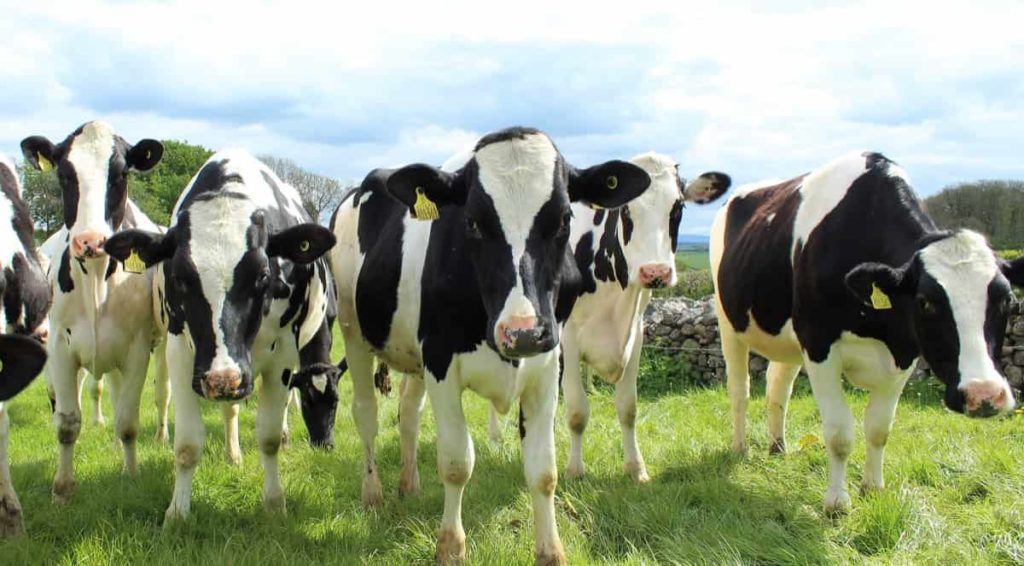
Dairy farm management practices in Uttar Pradesh
Dairy farming has been an important part of the agricultural landscape for thousands of years. As India is primarily an agricultural economy, about 70% of its population lives in rural areas, where livestock plays an important role in socio-economic life. Dairy farming has become a specialized and well-established dairy industry today, with mechanical interventions in all its operations, thanks to traditional family-run organizations. An increase in the supply of dairy farming helps existing dairy farmers.
This business support has helped a lot by creating alternative occupations for individuals. A large number of dairy farmers run dairy farms, which will eventually be offered to consumers as a retail product. In the process of developing quality products, the best way for a dairy farmer to run his dairy farm is to use his produce to the maximum advantage of the final organization. In addition, it should be able to sustain the effects of dairy farm conditions and creatures over a long period.
Investment in the dairy sector has created large-scale employment opportunities in the rural areas of the state. People raise cows and buffaloes and engage in the milk trade. Uttar Pradesh supplies 17% of India’s total milk production to the country. The government is also preparing to boost milk production in the state. The state government is implementing the protection of dairy animals and the establishment of greenfield dairies.
Some districts in UP like Lucknow, Kanpur, Meerut, Varanasi, Kannauj, Bareilly, Ayodhya, Firozabad, Gorakhpur, and Moradabad are being set up Greenfield diaries. In addition, four dairies in Aligarh, Noida, Jhansi, and Prayagraj are being upgraded. Increasing consumption of dairy and other livestock products is bringing significant nutritional benefits to large sections of the population in developing countries, although millions of people in developing countries still cannot afford good quality food due to high prices.
However, the rapid increase in production and consumption of livestock products poses a threat to human and animal health, the environment, and the economic stability of many poor smallholders, but it also provides opportunities for small and medium-sized dairy industries. Uttar Pradesh, India’s most populous state, is also rich in domestic animal diversity.
In case if you miss this: Future of Agriculture in India
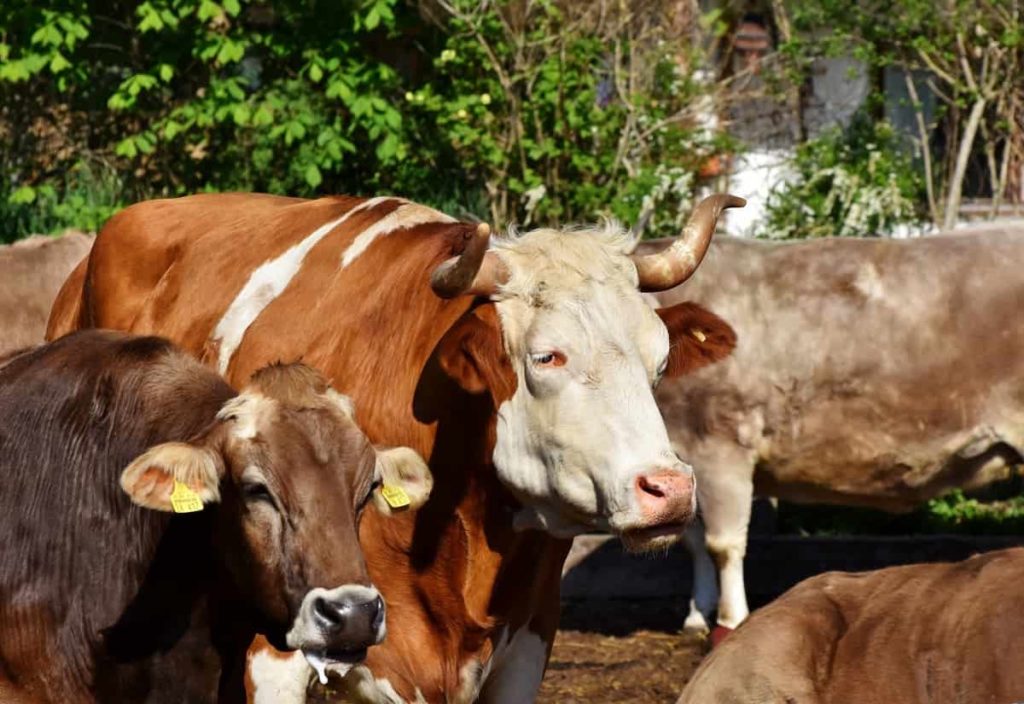
Importance of dairy farming
- Milk is healthy food in all animal products.
- It contains the right amount of essential nutrients for the human body which are easily digested. Adding milk to the human diet also improves the digestion of other types of food.
- Milk production capacity varies from country to country, as some countries have surplus production, some have production deficits, and availability in some countries is tailored to their needs.
- The initial investment in the dairy farming business is less than in other industries. It’s eco-friendly. The risk of contamination from the dairy farming business is very low.
- Demand for dairy products is growing rapidly. Cow dung is a good organic fertilizer that enhances soil fertility.
- The risk of animal death can be reduced by ensuring cows in the dairy farming business.
Land selection for dairy farming
- Select land for dairy farms that are elevated from the surrounding.
- Avoid low ground and waterlogged areas.
- The soil of the selected land should be fertile as most of the land will be used for fodder cultivation.
- Make sure, there should be a good supply of fresh, clean, and soft water. There should be a good communication for the farm.
- The site should be close to the veterinary hospital / artificial insemination center.
- The proposed dairy farm should be supplied with electricity.
- Farmer / Entrepreneur Training – The success of dairy farms depends on the scientific management of dairy animals. Proper training on dairy farming is essential before starting a dairy farm. The Department of Livestock provides regular dairy farming training.
- Selection of dairy animals – In India, both cows and buffalo are used for milk production. As a dairy animal, each species has its strengths and weaknesses. The entrepreneur should decide on the animal species based on the strengths and weaknesses of the animal. Anyone can start a dairy farm with 50% cows and 50% buffaloes.
In case if you miss this: Organic Farming In Nagaland, How To Start
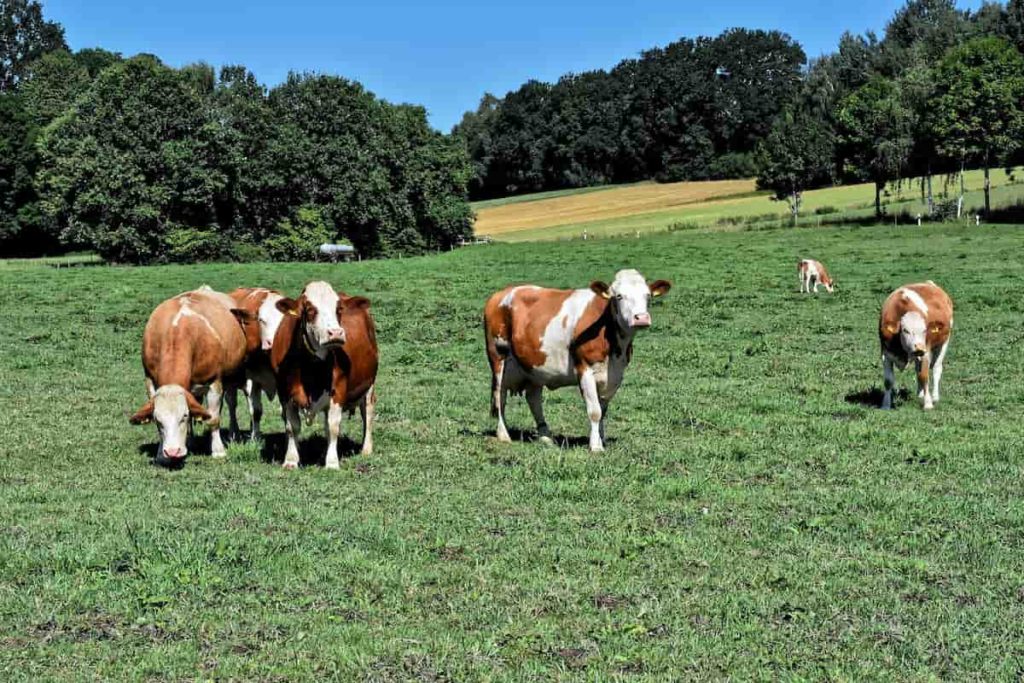
Choose a location for dairy farming in Uttar Pradesh
Based on the needs of your physical plan, an ideal location should be chosen where all the facilities are available at a price that maximizes your profits. The land area should be large enough to accommodate all the facilities. It can be set up either in a place that you own or in an area that is leased to you. In the latter case, the terms of the agreement must be taken into account.
Some of the ideal locations of dairy farms according to different advantages are;
- Near the cities – Assured market, low transportation costs, low loss, high prices.
- In rural areas – Low labor and cost, land for fodder cultivation
Dairy farming requirements
There are some components of dairy farming that you should be aware of before setting up a dairy farm.
Land – You must have some arable land on the farm to grow a green fodder crop for your livestock. The land area depends on the number of animals (cows or buffaloes). Usually, 2 acres of land is enough to raise about 15 cows.
Shed – There should be a proper and covered safe place to keep the cow before bringing it to your farm.
Water – Clean and plentiful water is needed to grow livestock and green fodder.
Fodder – Since cows need three types of fodder for optimal milk production and high-fat content, you should have good fodder management, from raising fodder to feeding fodder daily. Your dairy needs dry fodder, green fodder, and feed concentrate (for extra nutrition) to feed the cows.
Breed selection – In dairy farming, it is important to select a good breed of high-yielding cows.
Labor – Labor is a big job in dairy farming, selected labor should be very good at handling farm activities including growing green fodder. It is best to give a day or two of training so that they can understand the normal activities of dairy.
Vaccination – To control the disease and protect the health of the cow, you must have a proper vaccination schedule. For this purpose, you can hire a veterinarian for routine checkups and medicines for cows.
Forage management – Fodder management is very important in dairy farming. The daily milk production of a cow depends on the type of fodder and the nutritional value of the given fodder. High-yielding cows should be given a mineral mixture with 1 kg concentrate to get 2.5 liters of milk yield. For example, if a cow produces 15 liters of milk daily, she should be given 6 kg concentrate with a mineral mixture. Three types of fodder can be provided under dairy fodder management methods.
Dry fodder – Wheatgrass, Kutti (rice/paddy straw), Chokar (wheat bran),
Green fodder – Any leguminous crops that are good in protein supplements. For example any Gram Crop, Alfalfa, Maize / Maize, Lentils, and Hybrid Grasses like CO-3 and CO-4, Nipper grass, etc. These green fodder crops can be used to make silage. This silage is very nutritious and will increase milk production. It is very important to make silage and it is especially needed in dry periods.
In case if you miss this: Organic Farming In Assam, How To Start
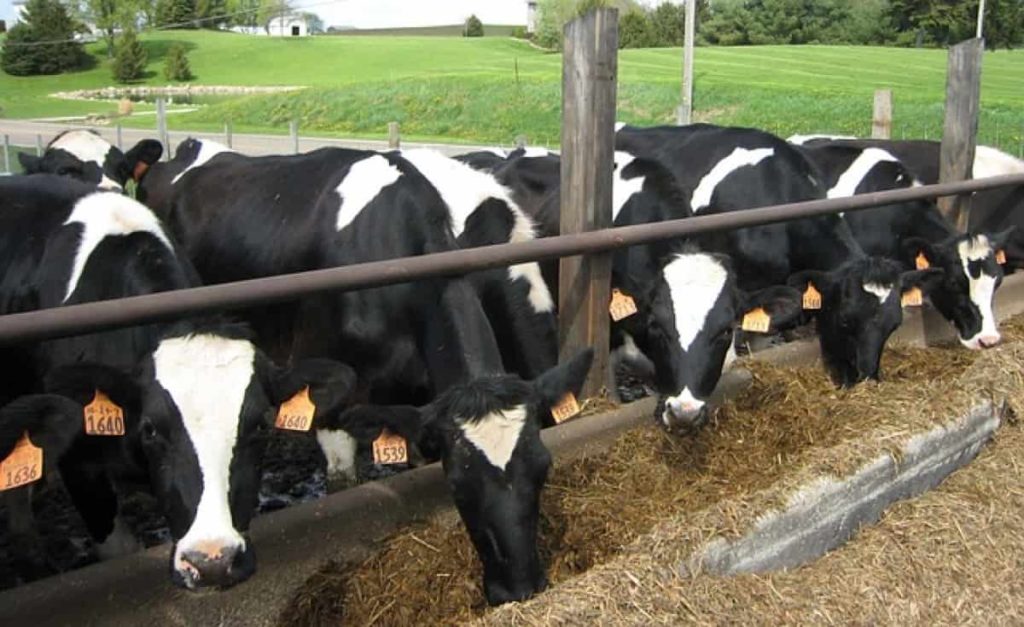
Concentrate and mineral mixture – Mineral Mixture: To protect the cow from mineral deficiency, it is necessary to provide mineral mixture as well as concentrated feed. All three types, such as dry greens and mineral blends, must have the right proportions for optimal milk production.
Disease protection in dairy animals
- Be aware of the symptoms of the disease such as reduction in feed intake, fever, abnormal discharge, or abnormal behavior.
- If the disease is suspected, go to the nearest veterinary support center for help.
- Protect animals from common diseases.
- In the case of an outbreak of infectious disease, immediately segregate the sick, in-contact, and healthy animals and take necessary disease control measures.
- Get tested periodically for brucellosis, tuberculosis, life-threatening illness, mastitis, etc.
- Deworm the animals regularly.
- Inspect the feces of adult animals to detect the eggs of internal parasites and treat the animals with appropriate medicines.
- Wash animals from time to time to promote cleanliness.
Purchasing machinery for dairy farming
The machinery required for your dairy farm depends on the size of your dairy farm. The equipment required for your dairy farm is divided into two broad categories.
Milk processing equipment – Pasteurizers, Homogenizers, and Tanks, Separators, Milking Machines.
In case if you miss this: How To Start Beekeeping For Beginners
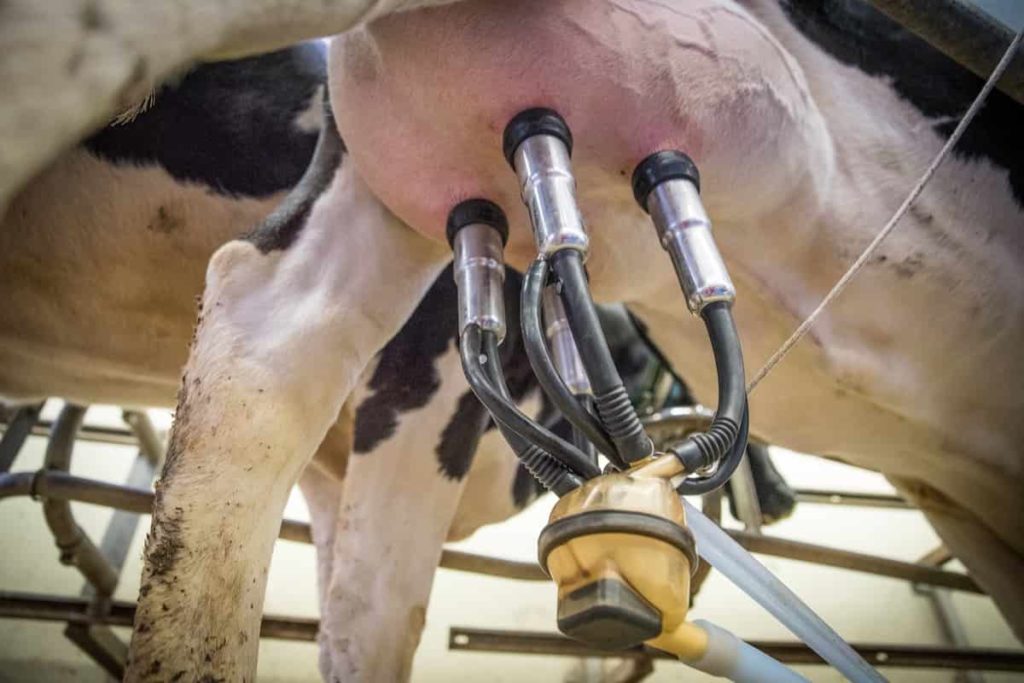
Farm equipment – Fodder truck, tractor implements, pressure washer, generator, fodder blocking machine, milking cans, loader tractor, and feed grinder, etc.
Important dairy breeds in Uttar Pradesh
In Uttar Pradesh, there are five breeds of cattle are available. Three cattle breeds are draught types (Ponwar, Kenkatha, and Kherigarh), and the other two fall into the category of dual-purpose i.e., milk and draught type (Gangatiri and Mewati). All breeds are well adapted to the agro-climatic conditions of the state. Some important breeds are;
Nagori or Nagauri
Nagori cattle are fine, large, upstanding, active, and humble with white and gray color. The eyelids are heavier and more drooping and the eyes are smaller, clearer, and brighter. The ears are large and pendulous. The horns are moderate in size, protrude outward from the outer angles of the pool, and move upwards with a gentle curve to turn in at the points. Nagori cattle are erect, fine, and large animals. They are usually white and gray. They have long, deep and powerful frames that make them the best animals for farming. On average, a cow can produce up to 600 kg of milk during lactation.
Hariana
Hariana is an Indian breed of cow found in northern India, especially in the state of Haryana. This breed was formerly known as ‘Hisar’ and ‘Hansi’ according to its place. Generally, the breed is white or light gray with a coffin-shaped skull. In bulls, the color between the front and back is relatively dark or dark gray. The animals have long, narrow faces, well-marked bones, and small horns in the center of the poll.
This breed is mainly maintained for the production of bulls as they are powerful working animals so more attention is paid to the management of male calves. However, cows also give adequate amounts of milk. Good cows can produce up to 1700 kg of milk in a single lactation whereas an average of 997 kg (between 693 and 1745 kg) of cows are produced in a single lactation.
Gangatiri
Animals of this breed are medium milk producers and have good draft ability. The color is full white or gray. The horns are of medium size and protrude from one side of the pool behind the eyes and from the top to the outside and are curved upwards and inwards and end with pointed tips. The eyelid, mouth, hoof, and tail switches are usually black. The average milk yield during lactation is about 1050 kg, with an average fat content of 900 to 1200 kg with 4.9% varying from 4.1% to 5.2%. The horns are of medium size. The eyelid, mouth, muzzle, and tail switch are usually black.
Kherigarh
Kherigarh is a draught-purpose breed and the “Kheri” district of Uttar Pradesh is on the path of growth. The breed is named after the area. This breed is also known by different names like “Kheri”, “Kharigarh” and “Khari”. Kherigarh is a local breed of cattle in India. It started in the Lakhimpur Kheri district of Uttar Pradesh. Kherigarh is a draft breed of cattle. Kherigarh cattle are relatively small animals. They are usually white or gray with small and narrow faces. Kherigarh cattle have small ears and bright eyes. They have a small neck that looks strong. Bulls have well-developed elbows, and cows have relatively small humps.
Mewati
Mewati, also called Kosi, is a local breed of cattle in India. Mewati cattle are usually white with dark necks, shoulders, and quarters. The face is long and narrow with a straight, sometimes slightly raised forehead. The average milk production is reported to be about 958 kg. It is considered a dual-purpose breed with good milking and drafting ability. Bulls are known for their strength and endurance and are used for agricultural and manufacturing purposes.
Ponwar
Ponwar is a local breed of cattle in India. The state is known to originate at Ponwar in Puranpur Taluk in Pilibhit district of Uttar Pradesh state and the breed is named after the same place. Cattle are also confined to a small geographical area adjacent to Ponwar. Animals of this breed have small, narrow faces, small ears, and large, bright eyes. The forehead is slightly concave and often has a white mark on it. The horns are long, erect, and laryngeal in shape. They range in length from 12 to 14 inches. The neck is short and strong.
Bhadawari
Bhadawari is a native of the Agra and Etawah districts of Uttar Pradesh. The body is usually light or the color of copper is a characteristic of this breed. The eyelids are usually copper or light brown. The two white lines on the lower part of the Chevron neck are like those of a buffalo. The bullock is a good draft animal that can withstand high temperatures. Fat content ranges from 6 to 12.5 percent. This breed is an effective conversion of fat feed into butterfat and is known for its high-fat content.
Kenkatha
Kenkatha is also called Kenwariya, is a breed of cattle belonging to India. They originated in the Bundelkhand in the state of Uttar Pradesh. Kenkatha cattle is a draught breed of cattle living in India. They get their name from the river Cain because they are raised on the banks of this small river. Their head is small and wide and their forehead is ripe. They are mainly used for drafting purposes and are well known for light drafting. And they are known to be able to survive in harsh environments and poor-quality forage. They are mainly raised and maintained in the extensive management system.
Sahiwal
The color of the Sahiwal animal is usually dull. Some may be light red. There may be dark brown or even black and other spots or large white areas. His body is symmetrical, broad head, long, deep, slow, and heavy constitution. The skin is fine and the horns are messy. Due to its heavy development, this animal is also known as ‘Lola’. The average weight of males is about 522 kg and females weigh 340 kg. Sahiwal originated in the Montgomery area of undivided India. Sahiwal is the best indigenous dairy breed in the country. Sahiwal’s average milk production is between 1400 to 2500 kg per lactation.
Different stages in dairy farming
Step 1: Rearing
Dairy cows usually use their day to eat, rest, and ruminate their cud. They move around and eat new grass (i.e., brushing). In different fields, they bolstered grain, feed, or silage and stay around other people throughout the day in what is known as restricted cattle nourishing operations, of which Some have many creatures.
Farmers also use growth hormones and anti-infection agents throughout the rearing process to reduce the spread of cow’s milk production and reduce the spread of irresistible ailments around their cows.
Step 2: Harvesting
The cow is usually milked twice a day at any cost. It takes about five minutes to feed each milking animal depending on the type of machine and the scale of cow’s milk is transforming. The milking machines reflect the movement of the young calf, creating a throbbing space around the sieve, which causes the milk to discharge from the udder.
Step 3: Storing
Milk stockpiling storehouses are refrigerated and then come in a variety of shapes and sizes. After the milk is collected, the stainless-steel fins and storage watts are cleaned before the agricultural milk.
In case if you miss this: Growing Ixora – A Full Planting Guide
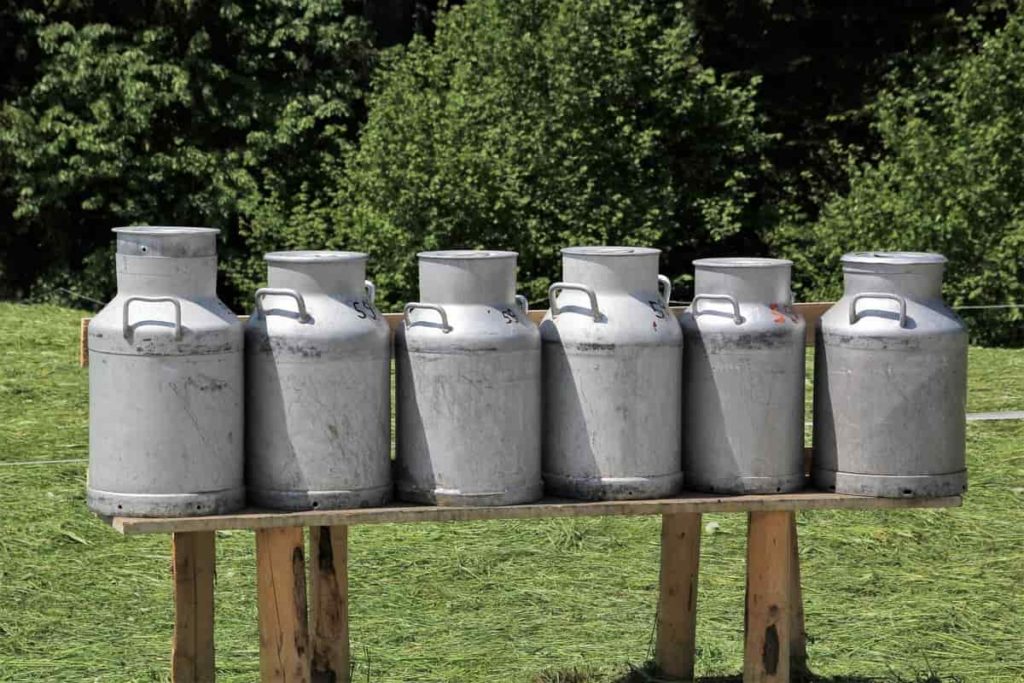
Step 4: Transportation
Finally, milk is collected from the transport farm every 24 or 48 hours. The tankers used contain extraordinary stainless-steel bodies that are perfectly safe to keep the milk cool during transport to the transforming manufacturing plant. The drivers of the milk tankers are licensed milk graders, who can assess the milk before it is collected.
Tanker driver grade and, if necessary, reject milk concentrated around temperature, sight, and odor. An agent’s example is collected from each form pickup before pumping on the tanker. Once collected, the milk is transported to the production line floors and stored in refrigerated warehouses before preparation.
Step 5: Lab testing
Milk samples are taken orally and on a large scale from home before collection. Large-scale milk tankers carry out anti-toxins and temperature tests before entering the transforming zone of a milk manufacturing plant. Farm milk samples are tested for milk fat, protein, mass testing of milk cells, and microscopic organism numbers. In case milk does not meet the quality norms, it is rejected. Most farmers are paid for the quality and quantity of their milk.
Step 6: Processing milk
It is pumped into storage silos once approved for use where it undergoes pasteurization, separation, and further processing.
Step 7: Packaging
Now the milk is ready to be bundled for delivery to the milk stores. Milk reaches programmed bundling machines through a funnel that fills and seals the milk in paper containers or plastic containers.
Dairy farm business loan in Uttar Pradesh
Individuals who want to start and then run their farms or improve existing farms can make the dairy farm loans. Reasons for such borrowing may be to set up small dairy units consisting of two to four cattle, milk collection, processing, and distribution, setting up of new medium or large dairy units, manufacturing of dairy products to build. Buy cattle sheds, or crossbreds, or better mulch cattle.
For your dairy farm business, you will be more likely to incur expenses related to purchasing raw materials, dairy production processing, dairy product processing, storage of dairy products, packaging, warehousing, etc. The reasons for obtaining a dairy farm loan are as follows;
- To establish a new dairy farm unit or expand the existing dairy farm unit for small dairy units.
- For rearing of young calves and cross-breeding of mulch cows and buffaloes.
- Grow fodder for cattle and then meet other capital needs for the smooth functioning of the farm
- Construction or renovation of cattle sheds
- Cold storage services
- Dairy marketing outlets
- Purchasing of dairy dispensation equipment
- Dairy manufactured goods transportation services
Features and benefits of getting a dairy farm loan
Some of the features and benefits of getting a dairy farm loan are;
- You get this type of loan to modernize dairy farm infrastructure.
- Most lenders do not charge a processing fee for the dairy farm loan you obtain. Then, you can apply for a Dairy Farming Loan online and upload the necessary documents. If you meet the criteria, the money will be credited to your account.
- The bank will review the application form and if it is found to meet the criteria set by the lender, the money will be immediately distributed to your bank account.
- One of the benefits of this loan is that you can enjoy a longer repayment period. The term of payment offered can be between 3 years and 7 years.
- The loan amount you can get can range from 75% to 85% of your total dairy farm investment. The interest rate is very nominal.
Gopalak Yojana in Uttar Pradesh
The state government of Uttar Pradesh has taken some steps to increase employment opportunities for the people. To this end, a new Gopalak Yojana has been launched in recent days. Under the welfare scheme, unemployed persons interested in entering the dairy business will get necessary financial assistance from financial institutions. Key features of the scheme are:
Reduction in unemployment – As the state has a long-standing problem of unemployment. This program will act as a response. Its operation means an opportunity for young and hardworking people.
Youth empowerment – When the state’s youth get adequate employment, the overall financial situation of the entire state improves. The implementation of the scheme will empower the people.
Increase milk production – The welfare program is based on livestock and milk production. As more and more interested candidates participate in the scheme, the amount of milk production will increase.
Getting credit for the scheme – Starting a dairy farm by raising animals is not easy. This requires a lump sum and this amount will be given to the dairy farmers as a credit through banks.
The total amount of credit – The banks will provide a total of 9 lakh to each selected candidate to start and carry on the milk production business.
Some credit installments – Money will be provided in installments for better management. In total, this person will receive the full amount in five different parts.
Number of Animals Required – Depending on the details of the program, any animal shelter may have 10 to 20 animals. These animals need good care.
Building an animal shelter – To get credit from a bank, a person will have to deposit money. 1.5 lakh and it should be spent on proper shelter for animals.
- Types of Pesticides Used in Agriculture: A Beginner’s Guide
- Economical Aquaculture: A Guide to Low-Budget Fish Farming
- 15 Common Planting Errors That Can Doom Your Fruit Trees
- How to Make Houseplants Bushy: Effective Tips and Ideas
- Innovative Strategies for Boosting Coconut Pollination and Yield
- Pollination Strategies for Maximum Pumpkin Yield
- The Complete Guide to Chicken Fattening: Strategies for Maximum Growth
- Natural Solutions for Tulip Problems: 100% Effective Remedies for Leaf and Bulb-Related Issues
- Revolutionizing Citrus Preservation: Towards a Healthier, Greener Future
- Natural Solutions for Peony Leaf and Flower Problems: 100% Effective Remedies
- Maximizing Profits with Avocado Contract Farming in India: A Comprehensive Guide
- Natural Solutions for Hydrangea Problems: 100% Effective Remedies for Leaf and Flowers
- The Ultimate Guide to Choosing the Perfect Foliage Friend: Bringing Life Indoors
- From Sunlight to Sustainability: 15 Ways to Use Solar Technology in Agriculture
- The Ultimate Guide to Dong Tao Chicken: Exploring from History to Raising
- The Eco-Friendly Makeover: How to Convert Your Unused Swimming Pool into a Fish Pond
- Mastering the Art of Delaware Chicken Farming: Essentials for Healthy Backyard Flocks
- 20 Best Homemade Fertilizers for Money Plant: DIY Recipes and Application Methods
- How to Craft a Comprehensive Free-Range Chicken Farming Business Plan
- Brighten Your Flock: Raising Easter Egger Chickens for Beauty and Bounty
- How to Optimize Your Poultry Egg Farm Business Plan with These Strategies
- Subsidy for Spirulina Cultivation: How Indian Government Schemes Encouraging Spirulina Farmers
- Ultimate Guide to Raising Dominique Chickens: Breeding, Feeding, Egg-Production, and Care
- Mastering the Art of Raising Jersey Giant Chickens: Care, Feeding, and More
- Ultimate Guide to Raising Legbar Chickens: Breeding, Farming Practices, Diet, Egg-Production
- How to Raise Welsummer Chickens: A Comprehensive Guide for Beginners
- How to Protect Indoor Plants in Winter: A Comprehensive Guide
- Ultimate Guide to Grow Bag Gardening: Tips, Tricks, and Planting Ideas for Urban Gardeners
- Guide to Lotus Cultivation: How to Propagate, Plant, Grow, Care, Cost, and Profit
- Agriculture Drone Subsidy Scheme: Government Kisan Subsidy, License, and How to Apply Online
- Ultimate Guide to Raising Araucana Chickens: Breed Profile, Farming Economics, Diet, and Care
- Bringing Hydroponics to Classroom: Importance, Benefits of Learning for School Students
- Ultimate Guide to Raising Polish Chickens: Breed Profile, Farming Economics, Diet, and Care
- Ultimate Guide to Raising Australorp Chickens: Profile, Farming Economics, Egg Production, Diet, and Care
- Silkie Chicken Farming: Raising Practices, Varieties, Egg Production, Diet, and Care
- Sussex Chicken Farming: Raising Practices, Varieties, Egg Production, Diet and Care
I want to Dairy farming training
I want to start dairy farm